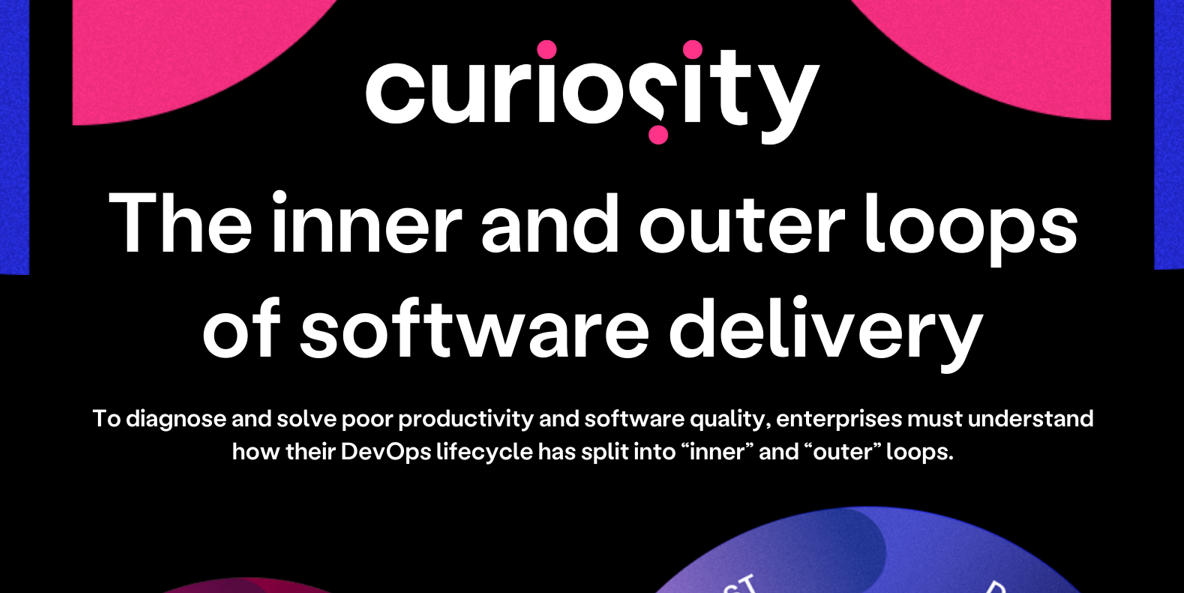Evolution and innovation in software delivery often focuses on automation, or on changing how teams collaborate and work together across the software delivery lifecycle (SDLC). However, when it comes to innovation, one key part of the SLDC is frequently overlooked: test data management (TDM).
Outdated test data management practices have long been a burden for testing and development, so much so that they now stifle innovation across the whole SLDC. Often, TDM practices don’t only hinder development speed and overall agility; they also risk legislative non-compliance, undermine test coverage, and block automation adoption. Yet enterprises often appear reluctant to move beyond manual TDM practices, or unaware of the extent of the underlying problem.
To achieve true quality at speed, and bring innovation to test data management, a new paradigm is essential. Organisations must consider moving from manual test data management to full AI-driven Enterprise Test Data. Automating TDM can provide test data that’s available on-the-fly, compliant, and complete for rigorous testing. In fact, Enterprise Test Data can be crucial for keeping up with innovation and unlocking it across the whole SDLC.
Perfect your test data strategy
Discover a proven roadmap for transforming enterprise test data practice. Watch our webinar to learn how you can deliver complete and compliant data on demand, developing quality software at speed.
Watch now

Outdated test data practices: A risk too far?
Test data practices have been stagnant for so long that overcoming bottlenecks is not as simple as just “automating” existing processes. There are many problems that a modern test data paradigm must solve, including compliance with legislation like the EU GDPR, The California Consumer Privacy Act, EU AI Act, and Canada’s Consumer Privacy Protection Act (CPPA).
Many organisations today still use raw production data in less secure test and development environments. This presents data security risks. Meanwhile, data in these environments is often harder-to-manage. For instance, organisations might struggle to identify, copy, and delete data on demand, potentially risking a breach of a citizen’s Right to Erasure or Data Portability.
In fact, only 55% of organisations today comply with data security and data privacy regulations [1]. Meanwhile, techniques commonly used today to manage data often do little to improve the variety or quality of that data, risking legislative non-compliance while undermining testing coverage and software quality.
How much time is lost to test data management?
Organisations today furthermore regularly spend an extensive amount of time and resources managing test data – though they might not be fully aware of the magnitude of this effort. The labour is typically spread throughout testing, development, and operations teams, who lose a chunk of their sprints to test data related activity. This can mask the extent of test data challenges, as teams individually strive to work through and around outdated test data practices, rather than tackle the core problem upfront.
Yet, the symptoms are clear. 41% of organisations lack the right test environments and test data, and a further 49% of teams are unable to manage the size and complexity of their test data sets [1]. Overall, a massive 44% of testing time can be spent waiting for, finding, or making data [2].
Enterprises today require a solution that solves these challenges in test data compliance, quality, and agility. Curiosity’s Enterprise Test Data® platform is designed to enable this paradigm shift, bringing your TDM up-to-date with 2025.
Automating TDM with Curiosity's Enterprise Test Data®
With Curiosity’s Enterprise Test Data® platform, test data management is replaced with AI-powered, on-the-fly allocation of complete and compliant data. Test data can keep up with the speed of modern software delivery, while supporting compliance and boosting testing rigour.
Enterprise Test Data achieves this by integrating and making key test data technologies available “just in time”. These technologies include Synthetic Test Data Generation, Test Data Masking, Data Subsetting, and On Demand Data Provisioning.
Synthetic test data is often key when removing risky live data from test environments, as well as for enhancing overall test coverage. It provides data combinations not found in existing production data, including the negative scenarios and outliers needed for rigorous testing. This data is furthermore fictitious, free from sensitive content. With Enterprise Test Data, rich synthetic test data is built from a model of the metadata found in production. It therefore supports accurate and stable test execution, without the risk of exposing sensitive information.
Enterprise Test Data combines synthetic test data seamlessly with data masking, equipping enterprises with a robust approach to compliance. Test data masking is often the minimum for data compliance. However, consistently, and manually masking data from numerous sources can be slow and complex. This is why Enterprise Test Data provides a quick and simple approach to masking complex data, while weaving in rich synthetic test data to combine compliant testing with quality testing:
With Enterprise Test Data, masking data consistently across multiple data sources is as simple as specifying Excel-like functions, using a dictionary of re-usable masking rules to transform data consistently across data sources. The data functions resolve dynamically as the re-usable masking functions are run from a central catalogue, producing rich and varied test data for reliable and rigorous test execution.
All of this can be done on-the-fly during automated and manual testing. With Enterprise Test Data, parallel teams and frameworks can allocate data as tests run and can perform automated data “find and makes”. This automatically finds data for test scenarios, with integrated synthetic data generation to make missing combinations needed in testing. Backed by a comprehensive set of test data utilities, this “just in time” approach provides complete and compliant test data as-a-service.
This automated approach to test data is equipped for modern DevOps environments and hybrid architectures. It integrates seamlessly with database orchestration, schedulers, and orchestration engines. Testers, automation frameworks and CI/CD pipelines can deploy and access the databases they need in parallel and on demand, filling their environments with rich and compliant data on-the-fly. They enjoy the access to the rich and compliant test data they need, exactly when they need it:
Revolutionise your test data management in 2025
Curiosity's Enterprise Test Data platform is designed for organisations looking to revolutionise their test data management, bringing test data “best practices” up-to-date with developments in compliance, delivery practices, and DevOps toolchains. It combines on demand data provisioning, masking, generation, and more to ensure that the right data is allocated to every test on-the-fly. Embrace the concept of Enterprise Test Data and overcome your test data bottlenecks in 2025!
Perfect your test data strategy
Discover a proven roadmap for transforming enterprise test data practice. Watch our webinar to learn how you can deliver complete and compliant data on demand, developing quality software at speed.
Watch now

Footnote:
[1] Capgemini, Sogeti (2021), World Quality Report 2021-22. Retrieved from https://www.capgemini.com/gb-en/research/world-quality-report-wqr-2021-22/
[2] Capgemini, Sogeti (2020), The Continuous Testing Report 2020. Retrieved from https://www.sogeti.com/explore/reports/continuous-testing-report-2020/








